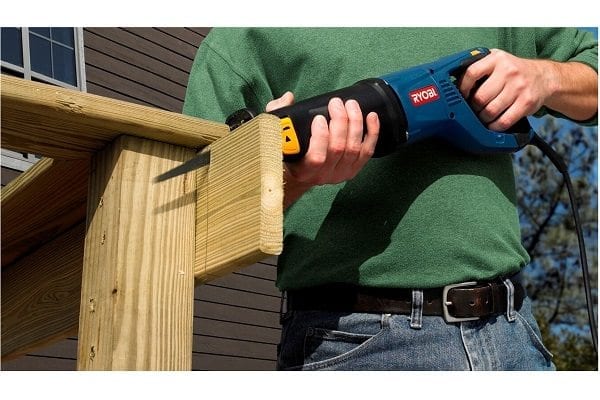
How does a reciprocating saw work?
How does a reciprocating saw work? A reciprocating saw uses a reciprocating motion, which means the motor quickly moves the blade back and forth. The saw’s handle doesn’t move at all, all of the action is centered on the blade.
A main benefit of reciprocating saws—aside from its ability to cut through practically anything, including wood, metal, plastic, drywall or plaster—is that you can take it almost anywhere, including tight spots where other tools might not fit.
Still, reciprocating saws aren’t necessarily for precision cuts. Instead, they’re for speed, convenience and versatility. Reciprocating saws are a favorite among contractors who do demolition. Remodelers like the saw because it allows you to tackle a variety of jobs with a single tool. You just have to change the reciprocating saw blade to match the material you are cutting.
Most reciprocating saws weigh at least six pounds, so they have two handles: one where the trigger is located, and another one near the front, which you can grasp while cutting to steady the tool.
Reciprocating saw blades typically measure from four to six inches long. On most reciprocating saw models, the blade slides easily into the saw without the need for any tools, and then a blade lock holds it in place.
While most saw blades move straight in and out, some tools feature an orbital action so the blade moves in a slight circular motion while moving in and out. The orbital action allows the tool to cut faster, at least in softer materials. Orbital action is for speed rather than precision, like for demolition work. Highly precise cuts call for the traditional, in-and-out motion of the blade
To explain how does a reciprocating saw work, is important to mention that reciprocating saws rely on five essential parts: the blade, the motor, the speed control, the shoe and the handle.
Reciprocating saw: The blade
When explaining how does a reciprocating saw work, needless to say that no saw will work without a blade, of course. The same reciprocating saw will operate equally well when cutting metal, wood, plastic, drywall and even shrubbery—as long as you choose a blade designed for slicing through those materials.
For example, high-carbon steel blades are best when working with wood embedded with nails, while a diamond grit blade is better for demolishing a car. Carbide blades are designed to cut cast aluminum. High-speed steel blades make easy work of cutting through steel pipe and channels. And pruning blades easily saw through green wood.
The difference is in the kind of metal the blade is made from and in the configuration of the blade’s teeth.
Reciprocating saw: The motor
As with all power tools, the motor runs the reciprocating saw. Some reciprocating saws have cords, and others have rechargeable battery packs, so you can use it without a cord.
Cordless reciprocating saws typically have 18-, 24- or 35-volt motors. Corded reciprocating saws come in a range, from four to 16 amps. The more powerful the motor, the faster the saw will operate. Some saws cut with up to 3,200 strokes per minute.
Reciprocating saw: Speed control
Some reciprocating saws come with variable-speed triggers, but the traditional version operates with just one speed. Remodelers who use a single saw to cut a variety of materials typically choose the variable-speed version.
If you cut hard objects, for example, you need to cut slower than if you want to rip through soft materials. A variable-speed control allows you to do both.
Reciprocating saw: The shoe
Likewise, some reciprocating saws come with an adjustable shoe, while others are non-adjustable. An adjustable shoe can extend the life of the blade, as it allows you to pull back and expose unused blade teeth and push forward to use different teeth.
Reciprocating saw: The handle
Different manufacturers fix different kinds of handles on their reciprocating saws. A rule of thumb: soft-grip handles tend to be easier on the arms and body while you operate the tool, so you become less fatigued and can possibly work a little longer.
Some tool makers offer rotating handles, which you can reposition depending on the angle of the saw.

